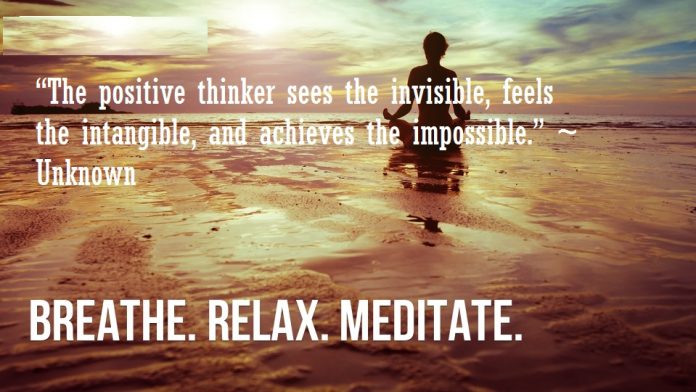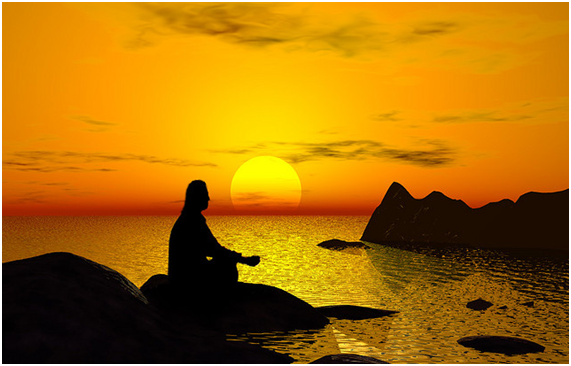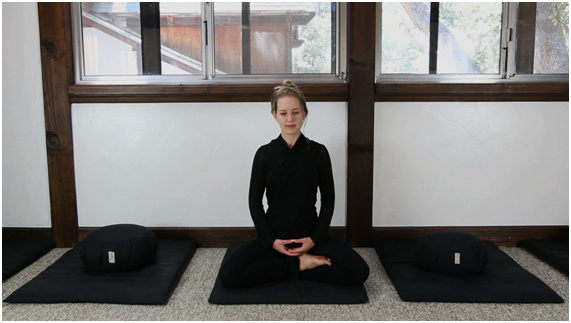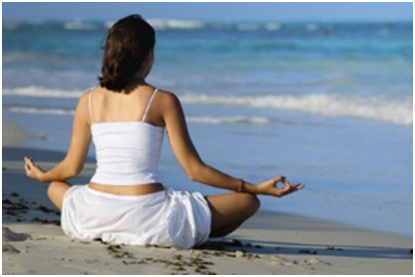This article is based on the successful techniques and tips for meditation and how one can easily practice meditation at home.
When you say meditation, what exactly comes to your mind? Sitting in one posture and focus on an object or chant constantly? Before we proceed with a complete guideline, let us first understand what the word meditation mean.
What is Meditation?
Meditation is a practice where the mind crosses the conscience bar and enters a zone of deep relaxation of body and mind. It is beyond any religious practice. It is largely practised to go beyond the common awareness and let you enter a state of ultimate awareness of your inner conscious.
Origin and History:
Let us look back at the roots of the practice of Meditation. The word meditation is derived from the Latin word ‘meditatum’ which means to ponder or think deeply. The roots lie in the religious chants of an ancient civilisation. The chants were rhythmic and repetitive to appease the ancient religious gods. The chanting is now known as chant mantras. These chant mantras are still used for certain meditative practice.
Antiquity – The earliest record of meditation practice has been noticed in Hindu religion, Vedanta to be precise. That goes back to 1500 B. C when meditation was practised in Vedantism. It then was started in Buddhist religious offering and the Taoist, Chinese religious practice. On the other hand, some believe that meditation practice had its origin in Eastern Asia and was spread via the Silk Road.
Growth in the middle ages – The Japanese Buddhism took a surge after the growth of Chinese Buddhism. This led to the growth of Japanese Zen. In the meantime, Jewish meditation was also growing and was also revolutionizing. The Christian practised meditation in a particular mode and pose. The western Christian meditation contradicted the single posture meditative practice.
The Modern Time – In the modern times, the Buddhist meditative practice became more prevalent. Yoga session and classes popped up at various places. In fact, at this period, meditation took the transformation from religious practice to a mind exercise to relax stress and promote self-satisfaction.
Now let us discuss seven different Types of Meditation which are more common in practice now.
Seven most effective forms and meditation techniques:
Vipassana Meditation Technique :
The best way to define this form of meditation is insight mindfull concentration. The purpose of this technique is to actualise the inner sense. The mind is made to wander and to feel the existence of life. It is both way practice. You let in the outer world feelings to come inside your mind, but at the same time, you practice to remain detached from them.
It is believed by some, that Vipassana meditation was first introduced by Buddha himself. Therefore it is practiced in Major Buddhist religion.
Read More : Yoga to Gain Weight
How to Practice Vipassana Meditation
Posture:
First of all, find a quiet place to practice Vipasana. It is recommended to do this meditation in the open air. Sit with crossed legs and your back straight. You can sit in on a chair if you have a back problem.
Breathing:
You have to breathe in through your nose and then breathe out through your mouth. Each time you breathe in and breathe out, you observe your abdomen movements with each breath. Slowly you start concentrating on the real world life cycle and at the same time get detached from them.
Through this meditation what you achieve is a deeper and clearer awareness of your inner mind. If you do this meditation for an hour in a day, then you can see both rises on ground reality and walk away as you wish.
2) Heart Rhythm Meditation Technique
This technique is practised to keep a balance between the heart and heartbeat. The heart is the centre of all organs, where blood is pumped to reach other organs. The heart is the centre of all emotions too. The goal of this yoga is to know and identify with your heart.
For this, you should be sitting in the grand monolithic posture. That is sitting on your chair in an upright position with your back at a ninety-degree angle. Keep both hands on your knees, palms down and close your eyes. Start breathing slowly. Concentrate on the stillness of your body and stay calm. Let your mind realise the harmony between your breath and your heart. This augments the purification of body, mind and heart.
3) Zazen Meditation Technique
Zazen, popularly known as Zen Meditation, is practised in Japanese Buddhism. It is a form of sitting meditation. This form aims at sharpening your senses. It has to be essentially practised while sitting. If you feel uncomfortable while sitting, then there are various postures to choose from. You can opt the ‘half lotus’ position, whereby you can tuck your right leg under your left leg. If your back and leg do not hurt, then you can sit in ‘full lotus’ position. You can sit cross-legged on your knee also but if your back and knee are weak, then sit on a chair in upright position.
This meditation wholly focuses on worldly realism and actualising your mind. You start with counting and focus on your breath. First count to five and breath without thinking anything but your breath. If you can’t, retry. Once you achieve till five, increase counting. With daily practice, you will learn to focus on your breath without even counting.
Read More : Benefits of Green Tea
4) Hypnosis Meditation Technique
This is not a fun party meditation. You can meditate and hypnotise yourself. This affirmation is done to get rid of stress and regain self-confidence. First of all, find a place where you will be undisturbed from rest of the world. You will have to believe in the meditation. You should feel the stress moving out of your body. Once you start feeling relaxed, affirm your belief or faith in yourself.
You can try out the hypnosis audio recordings to get a better grip on hypnosis meditation.
5) Mindfulness Meditation Technique
This meditation is followed to increase concentration and focus. After practising this form of meditation, you feel more relaxed, and your awareness gets deeper.
For this type of meditation, you can find a place of solitude. Choose any position which you feel you are comfortable. First, relax and then focus on your breath. Close your eyes and then shift your focus from one part of the body to another, from one organ to another. Then start to explore the sensations within you. Think about your mind, ideas and dreams. Then slowly clear your mind from these thoughts. Make your mind an empty box slowly.
You should practise this meditation and see how it feels. Do not over occupy your mind. Think one thing at a time and then set your thoughts free. Let them wander till you empty your mind from thoughts.
6) Floating Feather meditation Technique
This is the most relaxing and easy form of meditation. If you are a beginner with meditation, then you should start with floating feather meditation. This involves breathing, concentration and visualisation.
First, sit on the ground with your back straight, or you can sit on a chair if you wish. Breathe in till your belly is full of air. Then slowly breathe out every bit of air inside your lungs. While this breath in and out, imagine a feather in front of you. When you breathe in, the imagine the feather to fly and drop when you breathe out. Focus on every detail of the feather while you breathe in and out.
7) Guided Visualization Meditation Technique
This form of meditation is practised to escape into the world of imagination. If for some time, you want to be completely detached from the world of realism; then follow this guided visualization meditation.
First, find a quiet place for yourself, then close your eyes and relax your senses. Listen to the audio and engage all your five senses to feel and visualise an imaginary world. Listen and feel the ruffle of leaves, listen to the rumble of train wheels while it is moving. This form of meditation is also used as a psychological tool to get immersed in a visual and imaginary world.
Create a space for Meditation in your surroundings.
Choose any form of technique which you can relate to your present state. Then your next important step would be to create or find a surrounding which compliments your meditation practice perfectly.
Some people believe in having a single object as the point of focus for meditation. It can be a statue, painting, craft work, candle or a photo.
Decide what you want to derive from your space. If you want to feel secure and be indoors, then it can be paintings with the low light surrounding. If you want a visual space, then a solid colour wall or an open space is what you need. Wherever you are, you need to be detached from the outer world and live in your inner world.
Read More: How to do kegal exercises?
Simple tips for meditation successfully:
1) Follow it to the distance– Noone can master the art of meditation in few days. But you should have the perseverance to continue and increase the practice. You might not get an immediate result, but if you believe in your practice, you are bound to feel relaxed and focused.
2) Make it regular and official – If you want to go a long way then make a specific time for yoga on a daily basis. This will make you disciplined and pave the way for a long-term association with meditation.
3) Find support or guide – If you want to advance in your meditative practice, then it is advisable to take the support of an experienced friend or guide. You can even take help of meditation related journals. Studying meditative forms and practise goes hand in hand with successful meditation.
4) Master your breathing speed – Breath is a vital component in meditation. With constant practice, you can master the art of slow breath in and breathe out. It is the essential component for a complete body and mind relaxation.
5) Meditate at the end of the day – It is the best practice you can do to clear your body and mind before sleeping. Obviously, early morning meditation is the best start to your day, but meditation at night is a perfect way to end your day.
It is normal to have doubts while you are starting with meditation practice but do not stop in the middle. That will not give you happy results. If you feel like, take a guide or tutor in meditation for a year. That will help you to get a better hand in meditation, and you can progress to a higher level of body and mind relaxation. Happy Meditation!























